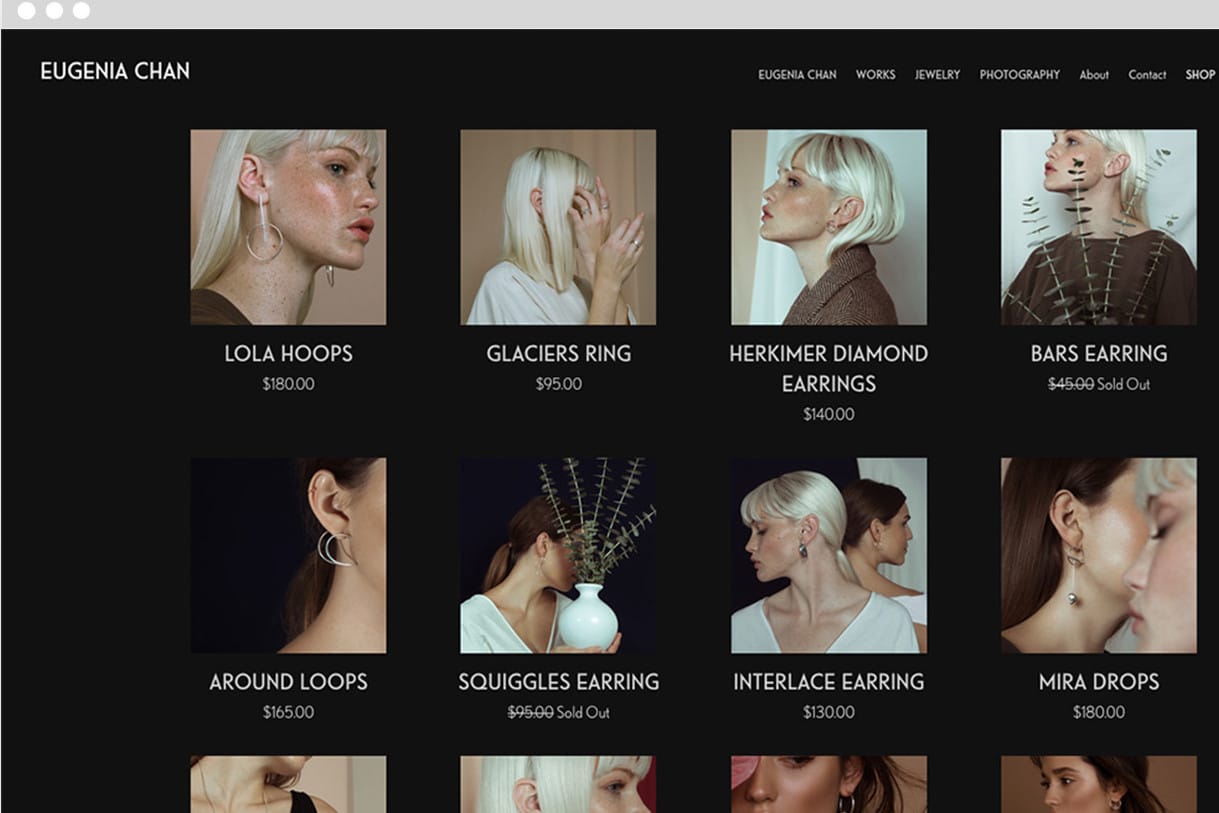Selling your art online is easier than it looks. Whether you’re creating illustrations, photo prints, books, or any other item, starting to make a profit on your work is as simple as setting up an online store and listing your goods. If you already have an online portfolio website for your creative work, you don’t need to create an entire website just to list your products—you can just start selling right on your own site.
Of course, there are some extra steps required before you can create those listings. How will you describe what you’ve got up for sale? What images will you use to showcase your products? What about the process of getting prints made from your photos or drawings, or finding a publisher who will print your book?
We got in touch with four creators who are using their Format websites to sell their work, and asked them to share how it’s done. These artists simply set up Format stores on their existing online portfolios, and now they’re generating extra income from their creative work. Sarah Pollman, Eugenia Chan, Yuya Parker, and Dotan Saguy share why they decided to sell their work online, as well as their advice for what makes a successful store.
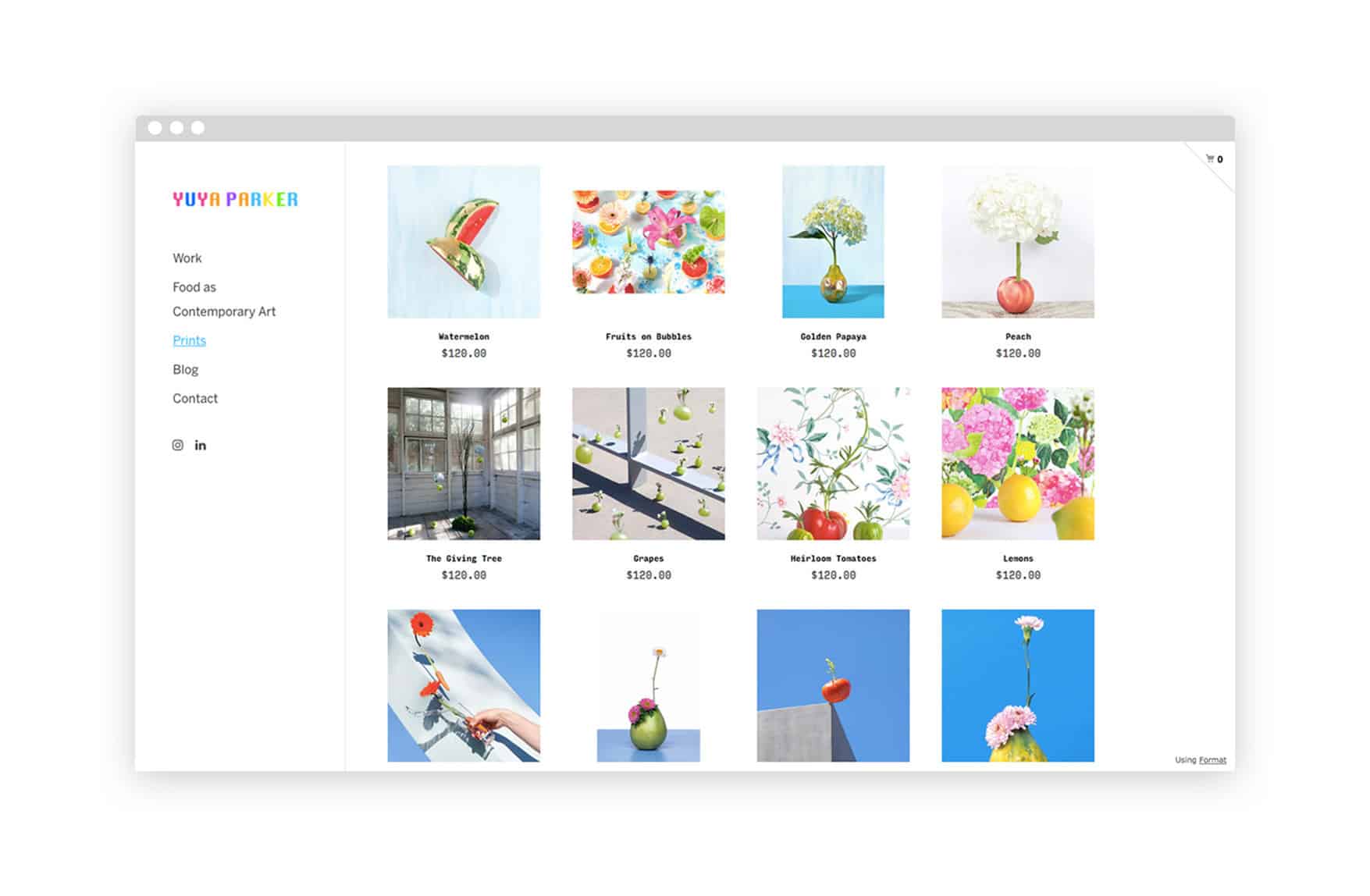
Yuya Parker
Yuya Parker specializes in food photography that would be a cheerful addition to any kitchen or restaurant. On his website, an online store allows visitors to purchase prints made to order. “I used to just have a website where people could contact me to buy my fine art prints, but it didn’t work well because it was not a quick or convenient process,” Parker says. “It’s much more convenient for customers to shop this way.” With print sales and his portfolio together on the same site, Parker feels it’s easier for people to shop his work. “It’s really nice to have everything on one site. Also, I think it’s a better experience for my customers to purchase directly from my website.”
“By purchasing prints online, people can enjoy my art wherever they want,” says Parker. He’s exacting about print quality, ensuring that every order is a strong example of his work. “Once I receive an order, I take the digital file of the photograph to a print shop I work with.” When it comes to getting your photos printed for sale, it pays to be discerning about where you’re printing them and how the final result looks. Printing your work to order like Parker does can ensure that you won’t lose money by doing a big run of costly prints that don’t end up selling, and offers an easy way to gauge how many people are interested in purchasing your work.
You may need to experiment with a few different methods of printing before you find the printer and the print style that works best for your photography. “I’m picky about color accuracy when it comes to printing, but the owner of the store has been printing my photographs over four years and he knows exactly what I’m looking for,” says Parker. I use premium matte paper for all my photographs because I like to make my photographs look like paintings, and matte paper helps create that effect.”
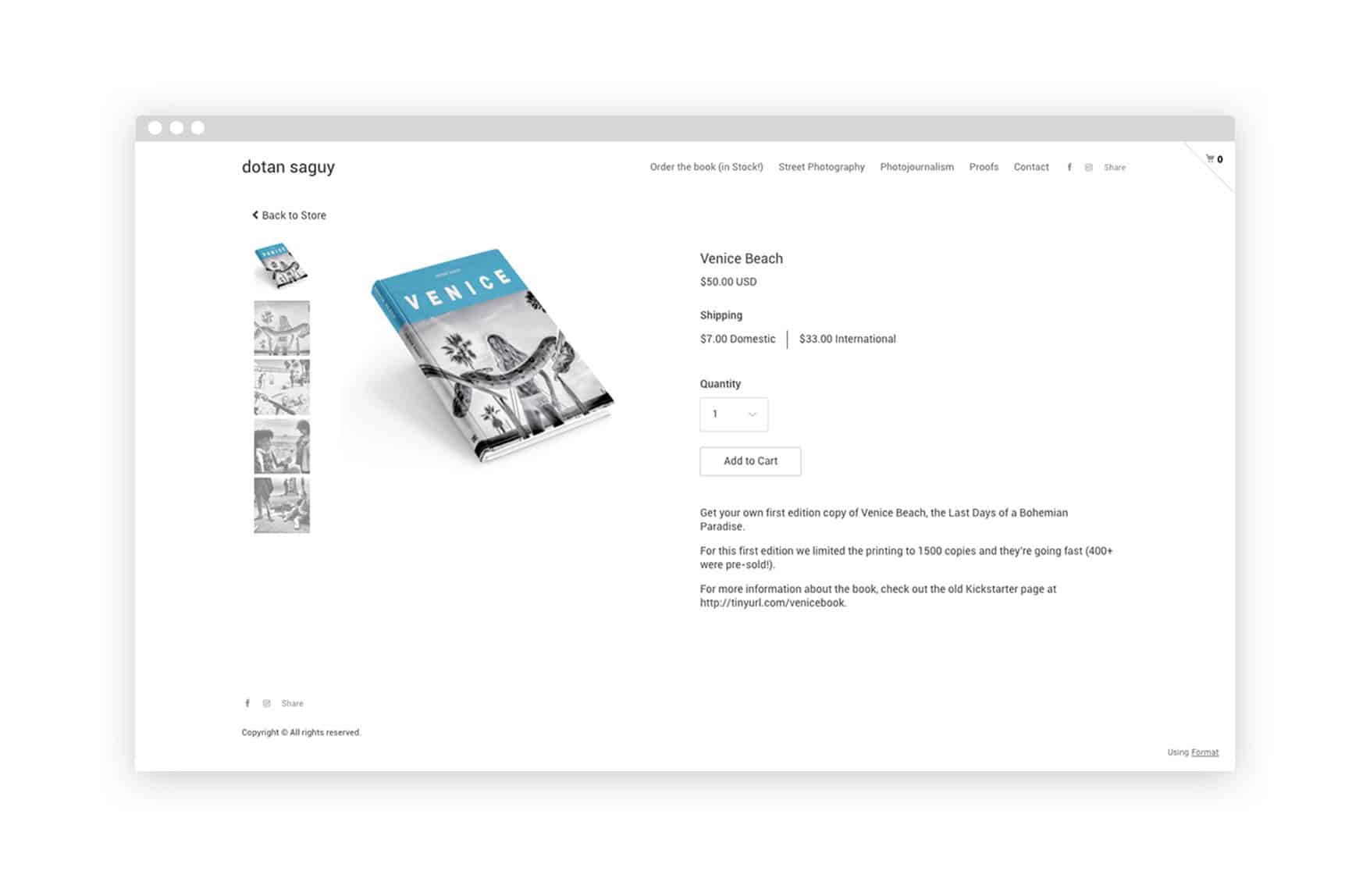
Dotan Saguy
Photographer Dotan Saguy ended up getting a deal to publish his book Venice Beach by attending Photolucida, a portfolio review in Portland, Oregon. He met the German publisher Kehrer Verlag there and pitched them the idea. “They are true craftspeople when it comes to making books so all I had to do was to sign their contract and let them expertly shepherd me through the process,” Saguy says of Kehrer. “They do their best to accommodate authors like me who like to collaborate on the design of the book, so I was able to work closely with their designer and learn a lot in the process.”
Going to a portfolio review can be a great opportunity to network with people in the industry, but directly contacting small presses is also a good way to pitch your work for print publication. There are lots of independent publishers on the hunt for talented artists to work with, and it never hurts to get in touch and share your portfolio with publishers you like. Or you can always start smaller by self-publishing a book via a local printer or even just photocopying simple zines.
“Selling the book in my store was incredibly easy to set up, and the page is user friendly to potential buyers,” says Saguy. He decided to sell his book on his own website so that he would be able to offer special editions. “Thanks to the high profile publisher my book is being distributed all over the world through Amazon and in many other local bookstores, but the Format store feature is a great complement that enables me to sell signed copies directly to collectors. I plan on selling prints there as well soon, as I get a lot of requests.”
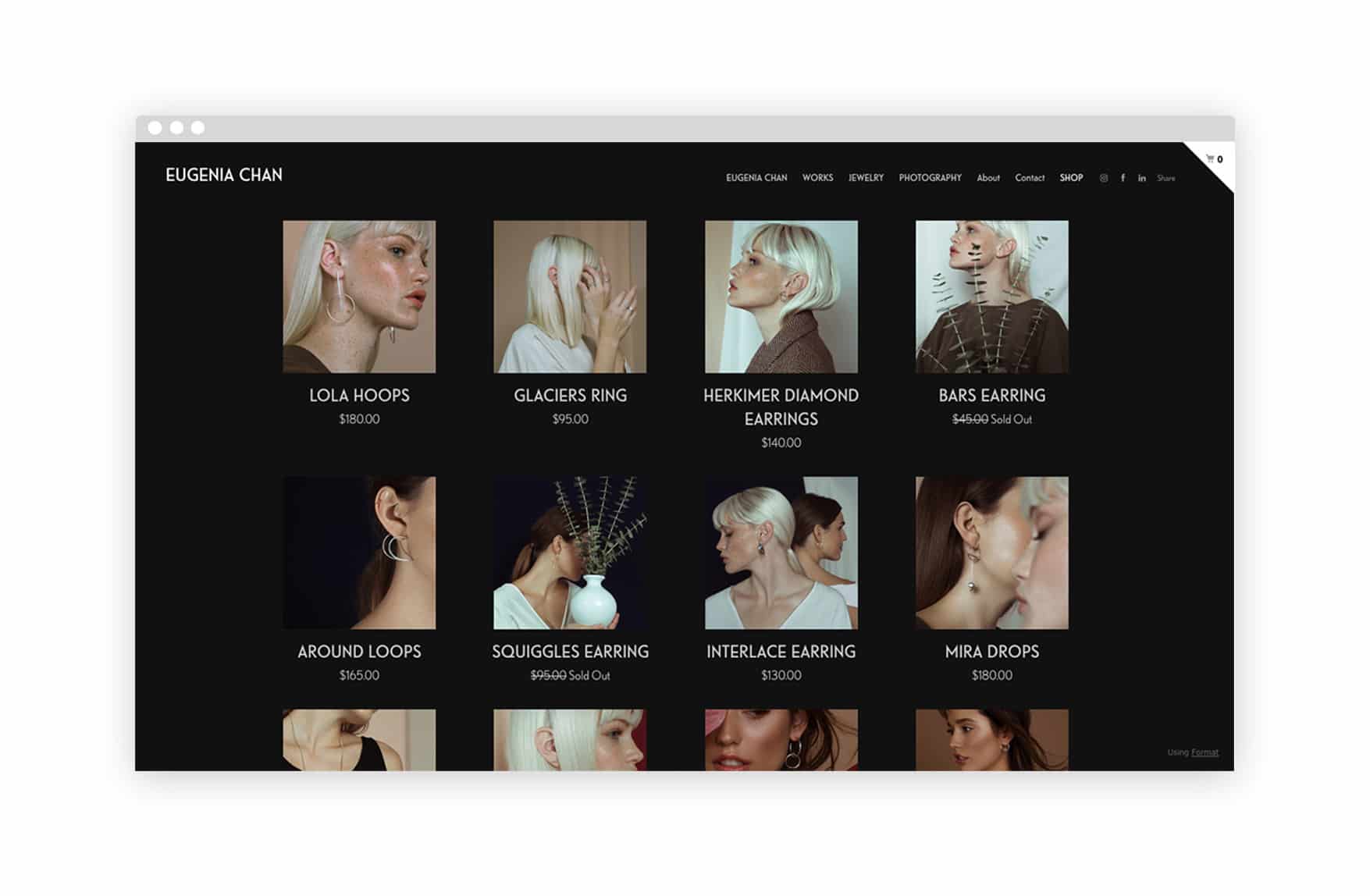
Eugenia Chan
Artist Eugenia Chan designs minimal, elegant jewelry that she sells on her online portfolio. “My online shop has allowed people a place to view all my work at once, and utilizing Format’s templates, my work stands out from the rest,” she says. (Chan is using the Slate theme on her website.) “The online shop means my clients have a reliable portal to purchase and stay up to date with my work.”
Chan finds that a simple layout works best when it comes to adding a store to your online portfolio. “Format provides you with a variety of flexible templates that allow you to easily drop your work in. Calling it basic may sound bad, but what the templates allow for is for your work to shine without all the unnecessary pizzazz.” Keeping your store design plain and simple allows the focus to stay on your products and ensures that it’s easy for customers to navigate through the purchasing process.
On her online store, Chan includes ample product photography and detailed descriptions so that people know exactly what’s on offer. Taking high quality product photos is crucial when selling design items, and including shots that demonstrate the size of each piece is always a good idea whether you’re selling jewelry, ceramics, furniture, or any other item. Rather than deleting items that have sold out, Chan updates them with a “Sold Out” notice, helping her store give visitors a complete view of her jewelry design work.
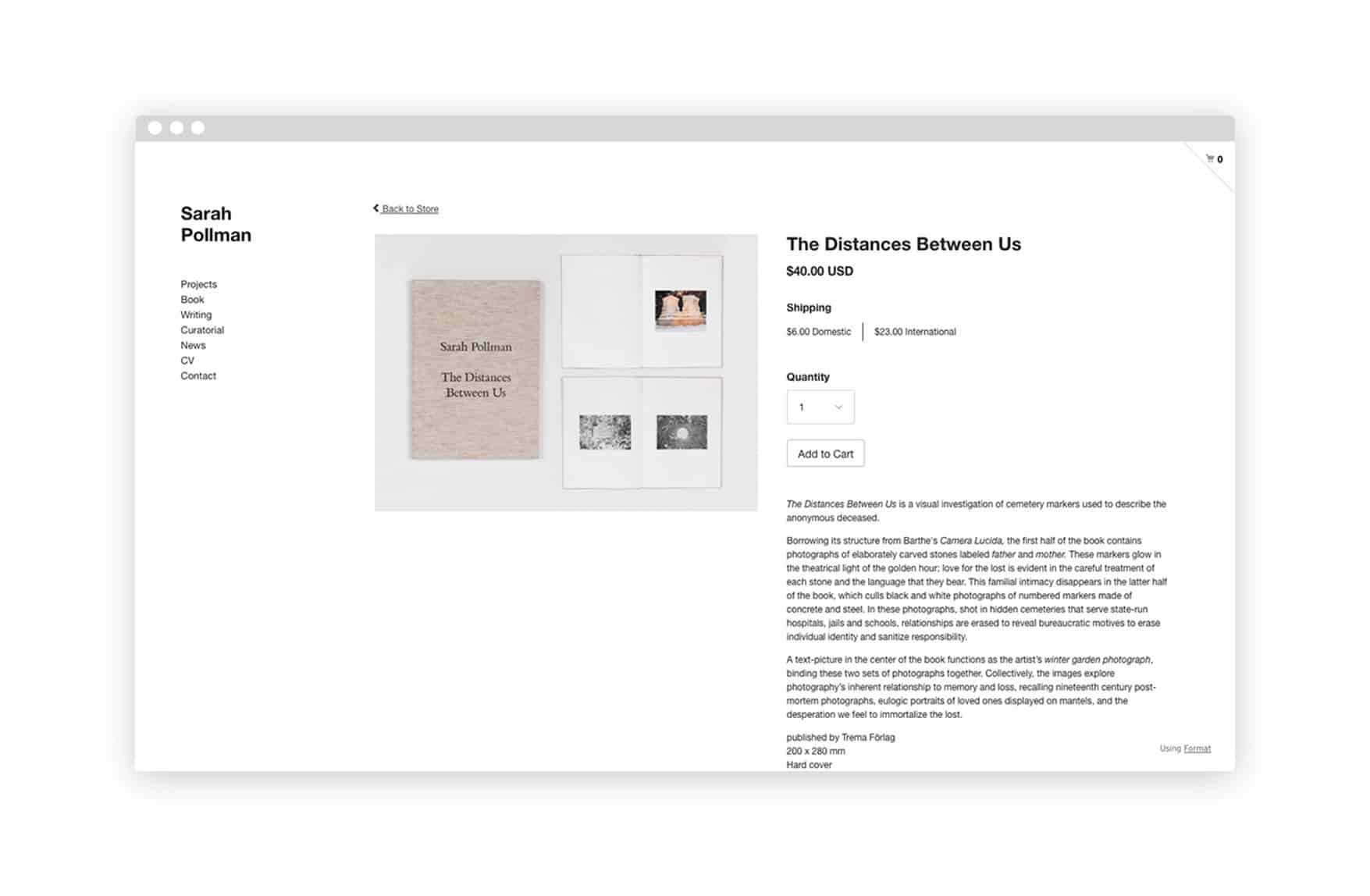
Sarah Pollman
Photographer Sarah Pollman didn’t self-publish her book The Distances Between Us, but she decided to sell it on her online portfolio anyway. After seeing Pollman’s work on Phases Magazine, Dennis Hankvist of Stockholm-based publisher Trema Förlag reached out to her to set up a collaboration. “The books that he had published previous to mine were beautiful, smart and well-designed, and I was more than happy to work with him,” Pollman says. “The end product is a true collaboration between his ideas and design choices, and the artistic ideas of my own that felt important and integral to the work.”
Even though The Distances Between Us is available elsewhere, Pollman wanted to showcase her work on her own website. “I decided to sell my book on my website as a natural extension of how my site functions as a portfolio for me,” she says. “I work in both art and art history, so the people who know my art may not know that I am also an arts writer and an independent curator, and those who know me for my interest in art history often are not aware of my artistic practice. My site has become a way to showcase and communicate all of my accomplishments to both audiences. It only felt natural that I would include my book on my site, as well as make it available to those who might want to have a copy for themselves.”
When it comes to promoting your work, Pollman thinks you should share what you’ve made with as many people as possible. “My advice to photographers who may want to publish and sell a book is to not be shy! Tell people about what you have accomplished and share it with everyone and anyone. People want to know, and they want to be able to support you in whatever way they can, whether it is telling others about your book, sharing it on social media, or purchasing a copy themselves.”
Putting your work up for sale on your own website means that potential purchasers will have a chance not only to check out what you’re selling, but also to browse the rest of your portfolio and develop a deeper understanding of your art.
More resources you might find useful:
Ten Steps to Creating A Personal Logo That Stands Out
Advice from Professors and Grads on Creating an Art Portfolio for School
20 Design Portfolios You Need to See for Inspiration
